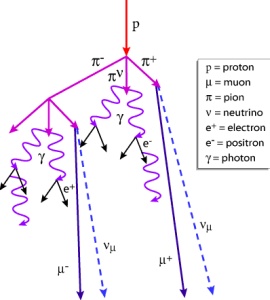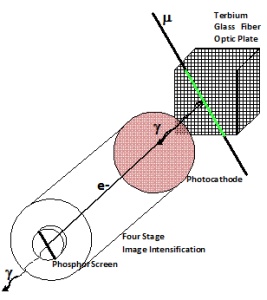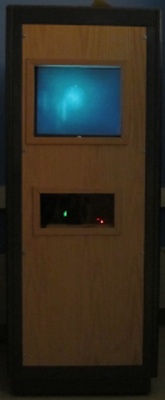
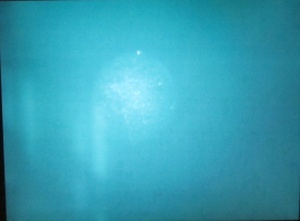
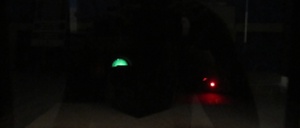
Cosmic rays come from outer space; they consist mainly of protons and helium nuclei. As these enter the top of our atmosphere they are absorbed by interacting with the nuclei of the atoms of air and produce a variety of different elementary particle. These in turn get absorbed by further interactions, again producing different elementary particles. This cascade of particles that travel with a velocity close to the velocity of light is often called an “air shower”. Some of the particles in the cascade decay radioactively into muons. These do not interact as easily with the nuclei of the atoms of the atmosphere and reach our detector. The rate of arrival of muons in the museum is only about 1/cm2 / minute. From time to time you will be able to see the “tracks” made by their passage through the detector.
HOW DOES THIS DETECTOR WORK
|
|
|
- A small bundle of Terbium glass fibers.
- When a muon crosses one of these, a small amount of light is produced. The light travels to the end of the fiber by total internal reflection.
- An image intensifier looks at the ends of the fibers and produces the image that you see at the end of the black box. This device is the same as the one used by our troops for night vision. Image intensifiers are in short supply; the one we have is very noisy: lots of random light spots.
- Finally these electrons strike phosphor atoms on the screen raising them to an exited state that emits light.
- A camera picks up the image at the end of the black box and displays it on the monitor above.
ABOUT MUONS
Muons are unstable elementary particles with a mass two hundred times the mass of an electron. Muons decay radioactively into an electron and a neutrino with a mean lifetime of t=2×10-6seconds. Traveling with the velocity (v) almost equal to the velocity of light v ≈ c = 3×108 meters/second, muons would only be able to travel a distance <L> = c x τ = (3×108) x (2×10-6) = 600 meters and would not be able to arrive at the surface of the earth if it were not for the relativistic time dilation.
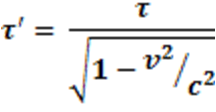 ,
,
Where τ’ is the mean muon lifetime in the Earth frame and t is the mean lifetime in the muons frame.
